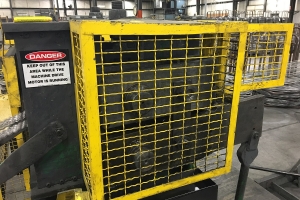Confusion abounds about OSHA’s recordkeeping pilot program
A confusing picture has emerged about the status of an OSHA pilot program to crack down on alleged under-reporting of accidents and illnesses.
As noted on this blog in August, a trade publication called Inside OSHA (subscription required to view) reported that OSHA was suspending a pilot recordkeeping program to clamp down on the alleged under-reporting. The newsletter said that the reason for the suspension was that the program had not found significant numbers of violations.
OSHA announced the program last year and said it would concentrate on industries with traditionally high accident rates. Within those industries, companies that have reported low accident rates were to be the most likely to be audited because of suspicions that the low rate might be generated by under-reporting.
But this week Jordan Barab, Deputy Assistant Secretary of Labor for OSHA, said that the recordkeeping program had not been shelved. Rather, he said, the program is refocusing on large manufacturing sites, according to an account by the Center for Public Integrity, a non-profit group that conducts investigative journalism. Barab said OSHA has inspected 187 worksites as part of its Recordkeeping National Emphasis Program, finding violations in about half of them.
OSHA has come under criticism from a different non-profit, Public Employees for Environmental Responsibility, which also said the recordkeeping program has been suspended. The group, known as PEER, said the agency had been ignoring high-hazard industries – petroleum refineries, chemical plants and paper mills, for example – while focusing on small businesses and certain geographic areas.
The criticism is unusual because OSHA has been stepping up enforcement since the Obama administration took over. Most previous questioning about the agency’s enforcement efforts has come from business groups saying that OSHA has been too aggressive.
Regardless of how this confusing situation plays out, it is vital for all companies to do a thorough job in compiling injury and illness records to meet OSHA requirements. For some hints on how to do so, see my post on the top 10 mistakes companies make with OSHA recordkeeping.
To keep up with the latest news about increased OSHA enforcement, subscribe to this blog and have it sent automatically to your Reader or email box.



1 Comment
PEER messed up, the Recordkeeping NEP was reissued September 28, 2010 (http://www.osha.gov/pls/oshaweb/owadisp.show_document?p_table=DIRECTIVES&p_id=4629), 7 day before their press release. And refineries and chemical plants were left off because, wait for it, they’re already covered under NEPs.